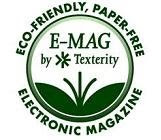Despite the overabundance of punditry regarding what newspaper companies should do, I couldn't resist entering Metaprinter's "If I owned a newspaper company . . ." contest. So here goes my list, which is by no means comprehensive:
- Stop thinking of the company as a newspaper company and the individual subsidiaries as newspapers. That tends to lock people into the model of one newspaper per subsidiary with a single Web site that mostly rehashes what was in the printed newspaper. Each subsidiary should think of itself as the dominant provider of information and advertising in its market. That might lead to multiple publications, Web sites, and other products.
- Put some staff-created content behind an "ad wall." There's been a lot of talk lately about newspapers not giving everything away on the Web and putting some content behind a pay wall, but that's like trying to put the genie back into the bottle. I would make non-subscribers watch a brief ad before they can see some of the most valuable content (such as the top local stories), just as some Web sites have an ad preceding free news videos. Readers would tolerate such brief ads better than having to make micro-payments for articles that might turn out to be duds.
- Pamper subscribers. Invite them to a Meet the Editors event or a town-hall meeting. Does the print edition close too early to publish some ball scores? Then let subscribers sign up for an early-morning email (with a bit of advertising) that has all of the major scores. Would they like to keep up with news of their hometown or favorite sports team 1,000 miles away? Then let them sign up for an email with headlines and links from their hometown newspaper -- er, local information and advertising provider. (These email products would work best if coordinated by a cooperative of news organizations, perhaps the Associated Press.)
- End all talk of creating customized, home-delivered newspapers. People who advocate that have never seen newspaper carriers in action. You can customize it all you want, but the carrier careening down the street at 4:30 in the morning can't see whose name is on each paper -- and doesn't care. She's just trying to pitch the papers onto the right lawns, avoid getting caught driving on the wrong side of the street, and get home in time to get little Jimmy onto the school bus. PDFs are better suited than printed newspapers to the distribution of digital content.
- Challenge assumptions that most readers really want their newspapers in an e-reader format. People who think that must not have seen the revenue that inserts bring in -- or have children at home. Just wait until your little princess drops your Kindle while reading the funnies or decides to decorate it with Hannah Montana stickers. (Reminds me of the kid who loaded an "Uncrustable" sandwich into the CD drive of the family PC. Oh well, it could have been worse: At least he didn't put Windows Vista onto the machine.)
- Find ways to package existing content for new audiences. For example, most newspapers have a wealth of wonderful information about nearby tourist attractions. Why not create a Web site for tourists to the area? Or a free newspaper describing what to visit? (I still remember a helpful little paper I used on vacation 20 years ago that simply showed the menus of restaurants in town.) Is this a saturated market? Perhaps, but no one else has the credibility of the local newspaper. Focus on other out-of-town audiences that might appreciate some of the content, such as people thinking about moving to the area or fans of local pro or college teams.
- Try to get away from having a pressroom and post-press operation dedicated to a single newspaper. Except perhaps for the biggest newspapers, that often means a huge investment in capital and skilled labor that is used only a few hours daily. I would look at outsourcing production to a nearby newspaper that used to be viewed as a competitor (but probably isn't) or, conversely, at taking on such outsourced printing.
- Make it easier to submit news tips to each subsidiary. Some newspapers do not provide an email address for such items and instead have a painful online-registration process for submitting tips.
- Eliminate the Not Written Here Syndrome. With most newspapers, if it’s not written by a staff member or a wire service, it ain’t getting into the paper or onto the Web site. I have given up trying to tell newspapers when I have published an item that should be of interest in their markets, such as the likely closing of a U.S. Postal Service processing and distribution center in town or major happenings at a nearby printing plant or paper mill. From what I can tell, newspapers have done nothing with such tips -- not until the "news" was announced by a local corporation or Congressman. A local newspaper’s Web site(s), and to some extent the printed newspaper as well, should become portals that aggregate information about the area from a variety of sources. Provide links to the local college newspaper, the mayor’s Web site, and community bloggers, highlighting truly newsworthy items (with proper vetting, of course). Link to news about major local companies, whether press releases, items in trade journals, or articles in out-of-town newspapers. Invite local coaches, fan clubs, civic groups, hobby/activity groups, political groups, etc. to create blogs on the Web sites.
- Avoid sacrificing the Web sites' user friendliness on the altar of Search Engine Optimization. SEO and web analytics can be powerful tools for figuring out how to get more hits from search engines. But sometimes doing what Google likes means creating something that actual people don't like. "Newspaper" Web sites need lots of repeat business to prosper.




